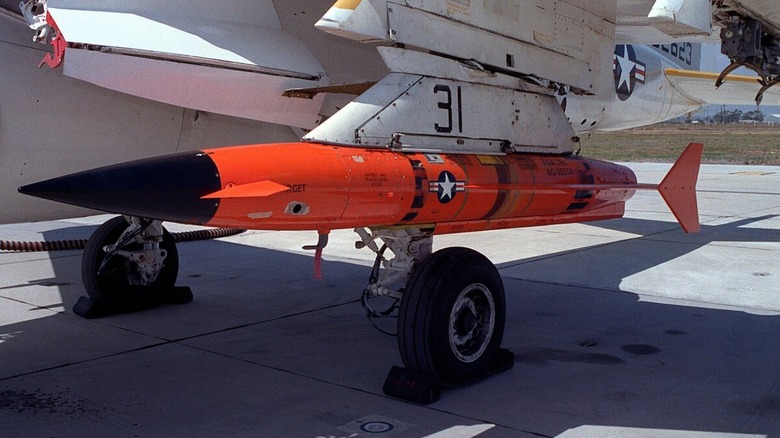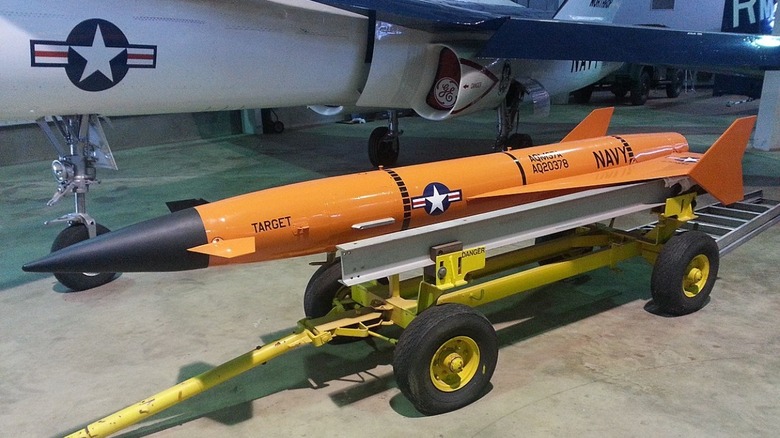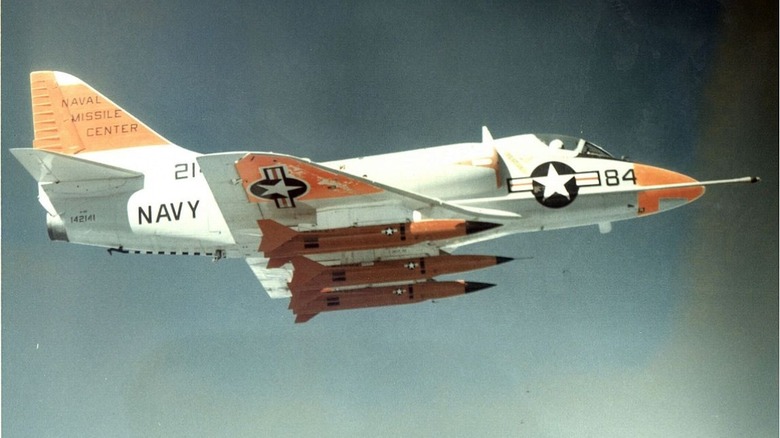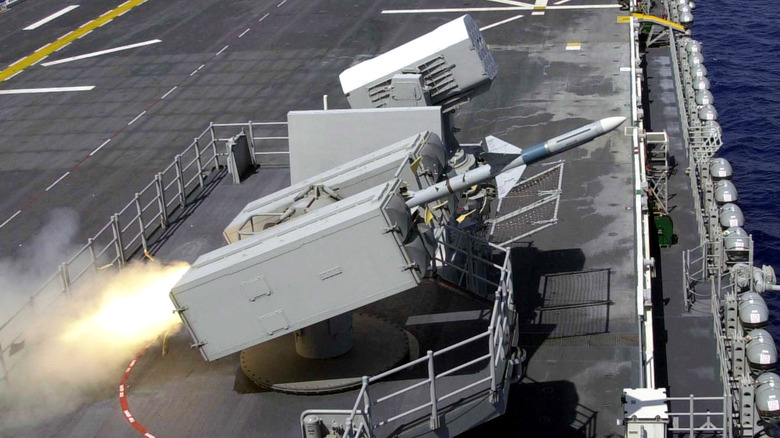These U.S. Military Drone Missiles Were Powered By Harley-Davidson Engines
The world's biggest names and biggest brands have a way of cropping up in unexpected places. Oftentimes, that's the very same way they became so ubiquitous in the first place. Is Harley-Davidson a powerhouse of the world of motorcycles? Yes, absolutely, but more broadly, it's also a globally renowned manufacturer of engines, having developed an enormous range of them in its history. Harley engines have, in turn, powered a surprising variety of machines, including the 1962 Servi-Car Police Motorcycle of the Watsonville Police Department and even a drone missile.
The United States armed forces have a history of fielding all manner of drones, from the smallest and subtlest recon machines to the largest and most destructive of flying weapons. Each has had a powertrain as fitting as possible to its size, role, and so on, and different manufacturers have provided them. In the case of the AQM-37 Jayhawk drone, a unique Harley engine was used for the job: The rocket-powered LR-64 engine.
Let's take a look at the creation and history of the AQM-37 Jayhawk, how Harley's engine came to be a critical part of it, and how it performed. One thing's for certain: This is a very different beast from the likes of the trusty Milwaukee Eight that lots of riders will typically associate with the company.
[Image by Dual Freq via Wikimedia Commons | Resized and cropped | Public Domain]
The beginnings of the LR-64 engine
The AQM-37A Jayhawk made its debut flight in 1961, joining the United States Navy two years later. Not a conventional missile or a reconnaissance drone (the latter being a newly-developing technology in the Cold War era), it would instead support its allies in a different way. The Jayhawk was a target drone made for the purpose of imitating incoming threats. In this way, it could train teams in anticipating and shooting down enemy missiles.
The AQM-37A needed to be as versatile as possible to be able to realistically stand in for a variety of different missile types. One big factor in this was speed, and the wider Jayhawk family had this in spades, capable of supersonic flight at up to Mach 4 and over 100,000 feet in altitude, with newer variants reaching 300,000 feet. It was a fascinating and valuable machine that required a distinctive powertrain: The Rocketdyne LR-64.
Around 5,000 LR-64 engines were built by the storied motorcycle manufacturer until the 1990s, according to the Harley-Davidson Museum. A formidable prospect indeed, the dual-chambered design allowed the engine to create considerable pressure as it burned propellant, allowing it to build to the astonishing speeds it could achieve. The AQM-37, powered by Harley for decades of its history, would serve the U.S. Armed Forces for a very long time. Here's how.
[Image by San Andreas via Wikimedia Commons | Resized and cropped | CC BY-SA 3.0]
The history of the AQM-37 drone
This drone was an invaluable part of the United States arsenal at a time when it was increasingly difficult to predict when an attack may come and the form it might take. It allowed for training and targeting drills against a variety of targets, standing in for them.
To be precise, Harley began producing its LR-64 engine in 1969. It may seem like a very unlikely avenue for the company to venture into, but a major contributing factor to this is the fact that something else important to the company happened that year: The purchase by American Machine and Foundry. As a result of the deal, of course, certain projects of AMF could take advantage of Harley's resources. Most significantly, AMF was developing such engines at the time, and Harley-Davidson was tasked with creating them.
The AQM-37A would follow the flight path it had been set to follow before launch. This gave it a certain predictability that armed forces could use to anticipate and prepare for it, thereby establishing a protocol to follow for later enemy launches and assaults from a range of altitudes and velocities. The drone family could even manipulate radar detectors to make itself look larger and more like the real thing on such systems. Its role in the armed forces was quite a unique one and would remain so, contributing to its impressive longevity: It remained in service until 2022.
[Image by Cobatfor via Wikimedia Commons | Resized and cropped | Public Domain]
The legacy of the AQM-37
In September 2022, the AQM-37 family flew its final mission. Over the course of around sixty years in service, a range of variations and improved models were made, including the AQM-37C Extended Performance, which brought its improved capacity for course correction and better radar to the Navy in 1986.
Two models of the final version, the 37D, took part in that last flight. Marking the occasion, The War Zone reports that PMA-208 program manager Don Blottenberger said that the mission "represents the closing of a chapter for the Aerial Targets Program Office (PMA-208) and our industry partners, but also intensifies our focus and provides us the opportunity to start and sustain new chapters with more advanced technology and capabilities that more closely resemble the threats we face."
Blottenberger certainly got that right. By this stage in its life, the AQM-37 had played a big role in the development of both defensive and offensive systems alike. After all, when it comes to training in realistic combat scenarios, there's nothing quite like a drone that can imitate an unfriendly, encroaching missile. This particular piece of Harley history is a real rarity today, and there's an obvious reason for that: The AQM-37 family wasn't built to be reused. After its brief mission was complete, its self-destruct feature would initialize if it hadn't already been destroyed. Its noble sacrifice, however, allowed for the development and refinement of the likes of the AEGIS missile defense system on ships and the RIM-7 Sea Sparrow.



